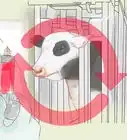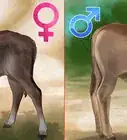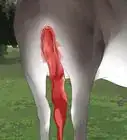This article was co-authored by Karin Lindquist, a trusted member of wikiHow's volunteer community. Karin Lindquist earned a BSc in Agriculture as an Animal Science major from the University of Alberta, Canada. She has over 20 years of experience working with cattle and crops. She's worked for a mixed-practice veterinarian, as a sales representative in a farm supply store, and as a research assistant doing rangeland, soil, and crop research. She currently works as a forage and beef agriculture extension specialist, advising farmers on a variety of issues relating to their cattle and the forages they grow and harvest.
wikiHow marks an article as reader-approved once it receives enough positive feedback. In this case, 93% of readers who voted found the article helpful, earning it our reader-approved status.
This article has been viewed 275,308 times.
Learn more...
Rectal palpation is a very common and highly popular method among all cattle producers in primarily performing pregnancy checks on cows and heifers, and also for checking the reproductive organs of a bull during a bull breeding soundness exam. For the purpose of this article, though, the focus is primarily on cows and heifers. "Preg-checking" or pregnancy checking female cattle often yields successful results especially if performed by an experience technician. Rectal palpation is undoubtedly the messiest, yet cheapest and often quickest form of preg-checking that can be easily learned by all those who have a breeding herd of cattle.
Steps
-
1Confine the cow. Put the female bovine to a squeeze chute or head-gate with gates on either side that prevents her from moving side-to-side.
-
2Dress up. An OB (obstetrical) suit or coveralls are best for this job. However, if you have old clothes that you don't mind getting dirty, then those will work fine as well.
-
3Glove up. Put on fingered latex shoulder-length gloves on the one arm (preferably your strongest arm) you will use to do rectal palpation with.
-
4Lube up. Apply a handful of OB lubricant to your hand, and rub it so that it gets above your hand as well as the inside.[1]
-
5Go in. Grab the tail with one hand (the one not gloved up), hold up above your head (see photo above) and with the gloved one, form a kind of closed-puppet mouth configuration with your hand (thumb tip connecting with all four tips of your fingers), and with the point of the top of your fingers forming a 45 to 60 degree angle, push into the rectum of the cow.
- You will have to push hard because the cow will be straining against you to push you out. Keep your wrist rigid and in-line with the rest of your arm, and keep your elbow flexed slightly so you have enough strength to push into the cow's rectum.
-
6Expel unwanted feces that are taking up too much room. If the rectum is full of feces, then carefully scoop the loose fecal matter with your hand and retract your hand enough so that you can expel the feces for the cow. Expel enough of the feces that you have room enough to work, so you can reach and find the cervix.
-
7Locate the cervix. It will be below your hand, as will the rest of the female bovine's reproductive tract. You should be able to feel a hard cylindrical shape part of the way in. If you are up to your shoulder in the cow and still can't find the cervix, you're too far in. Move back until you can feel the cylindrical object below your fingers.
-
8Move further into the cow. If you have short arms, you may either need a stool to stand on, or have to go in right up to your shoulder to feel for anything in the fallopian tubes or uterus of the cow.
-
9Feel for the fetus and uterine tract. If you feel anything that feels like the uterus is distended, with a small oval ball of liquid floating inside it or something that feels like a fetus, then you have found that the cow is bred. If you don't feel anything of the sort, just a uterus, then she may be open (not bred).[2]
- It takes a lot of practice to know what you're feeling for. Often it's best to preg-check 2 to 5 months into the cow's gestation period, so that you know you are feeling for something larger than a golf-ball sized ovary. The sizes you should be feeling are according to how far along the cow is:[3]
- 2 months - size of a mouse
- 3 months - size of a rat
- 4 months - size of a small cat
- 5 months - size of a large cat
- 6 months - size of a small dog
- 7 months - size of a Beagle
- These size comparisons are useful if you have a dead premature calf that may have been aborted.
- A vet or bovine practitioner who has had more experience and has preg-checked more cows will be more accurate than one who has done only a few cows. Thus saying, the more practice you get or the more chances you get to preg-check cows, the more accurate you'll become.
- It takes a lot of practice to know what you're feeling for. Often it's best to preg-check 2 to 5 months into the cow's gestation period, so that you know you are feeling for something larger than a golf-ball sized ovary. The sizes you should be feeling are according to how far along the cow is:[3]
-
10Pull out and release the cow. Once you've determined if the cow or heifer is pregnant and how far along, pull your arm out of the cow, and release her back into the herd, and repeat with another cow or heifer.
-
11Discard glove into the trash after you are done.
Community Q&A
-
QuestionWhenever I perform rectal palpation, I can never get my hands on uterine horns, but ovaries are palpated well by indirect approach. How can I find the uterine horns?
 KarinTop AnswererThis isn't going to be very helpful, but you won't be able to find them. The uterine horns are going to be very difficult to find, because they are as soft tissue as the rectal wall. What you're really going to be feeling for is the more harder, denser tissues like the ovaries, the cervix, and the small embryo-turned-fetus. You're doing everything right if you can feel the ovaries and, if you went more shallow, the cervix. The fetus can be felt in the uterine horns, so that's what you're really going to be feeling for, not the uterine horns themselves.
KarinTop AnswererThis isn't going to be very helpful, but you won't be able to find them. The uterine horns are going to be very difficult to find, because they are as soft tissue as the rectal wall. What you're really going to be feeling for is the more harder, denser tissues like the ovaries, the cervix, and the small embryo-turned-fetus. You're doing everything right if you can feel the ovaries and, if you went more shallow, the cervix. The fetus can be felt in the uterine horns, so that's what you're really going to be feeling for, not the uterine horns themselves. -
QuestionWhat is the treatment if a cow does not come into full heat rather than it used to be in false heat?
 KarinTop AnswererThere is no treatment available. You just have to wait it out and hope she doesn't abort and ends up keeping her calf to full term. A pregnant cow will have a false heat, but it doesn't necessarily equate to her aborting the calf.
KarinTop AnswererThere is no treatment available. You just have to wait it out and hope she doesn't abort and ends up keeping her calf to full term. A pregnant cow will have a false heat, but it doesn't necessarily equate to her aborting the calf. -
QuestionDo I have to go through the rectum to pregnancy check a heifer?
 Cora ProvencherCommunity AnswerYou most likely should. If it is a new mom, her vulva won't be as loose as a mom who has had a few calves. To cause the cow less pain, you should preform a rectal examination.
Cora ProvencherCommunity AnswerYou most likely should. If it is a new mom, her vulva won't be as loose as a mom who has had a few calves. To cause the cow less pain, you should preform a rectal examination.
Warnings
- Don't pull out too fast, otherwise you will end up with a pile of cow manure all over you. Pull out slow and easy, allowing the anus to naturally close on its own as you pull out.⧼thumbs_response⧽
- If you get easily grossed out from things like fresh stinky cow poop or having to rectal palpate your cows, or just even the thought of having to do it, then don't do it. Get a large-animal vet to do it for you.⧼thumbs_response⧽
- Spreading your fingers in the rectum may cause damage to the rectal wall which is deadly for the cow in most cases.⧼thumbs_response⧽
- Some cows may be a bit less tolerant you sticking your arm up their rear than others. You may get kicked, or the cow may suddenly decide she wants to move around or go down with you still inside her. Try to move with her as best as you can, but there will be risk for pulling a muscle in your arm or even breaking your arm if things really get out of hand.⧼thumbs_response⧽
- Make sure you're going in the right "hole." If you go in the vulva, you could potentially cause an abortion since you may have taken away the cervical plug, or palpated the fetus a little too much.
- Too vigorous a palpation through the rectal wall may cause abortions or the death of a fetus. You could sever the connection between the placenta and uterine wall, cutting off the fetus's life-giving connection between it and the dam. Be firm yet gentle, and do not be too aggressive with your actions.
⧼thumbs_response⧽
Things You'll Need
- Shoulder length latex fingered gloves (have a pack of over 100 if necessary)
- Coveralls or OB suit (especially if you don't want to get your clothes dirty)
- OB lube
- Head-gate with squeeze chute
- Cows/heifers that need preg-checking
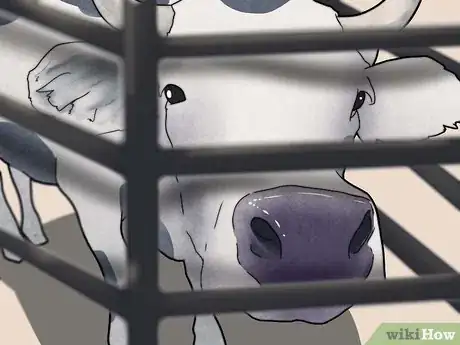

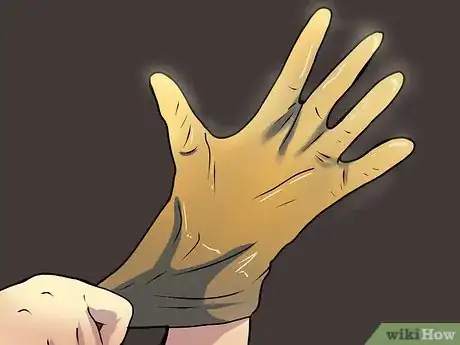
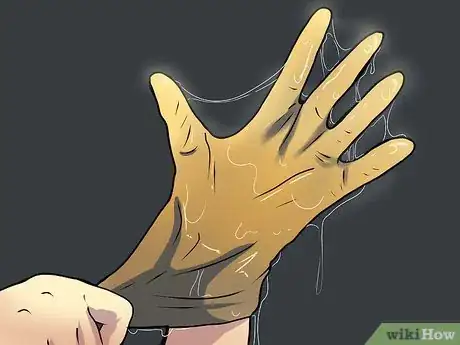
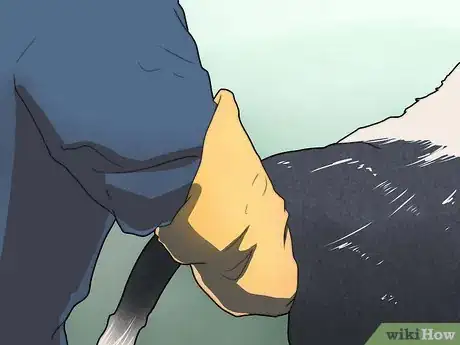
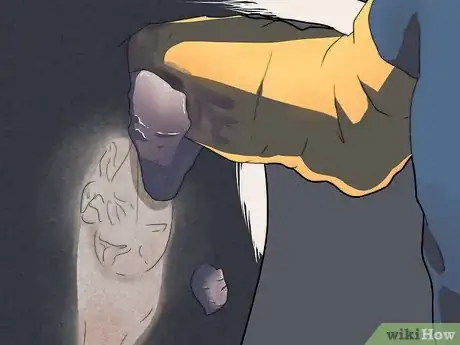
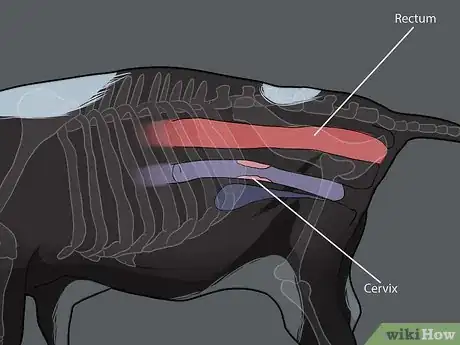
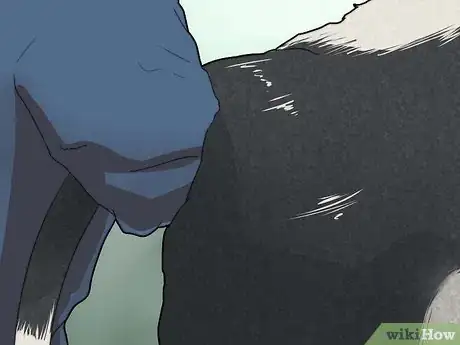
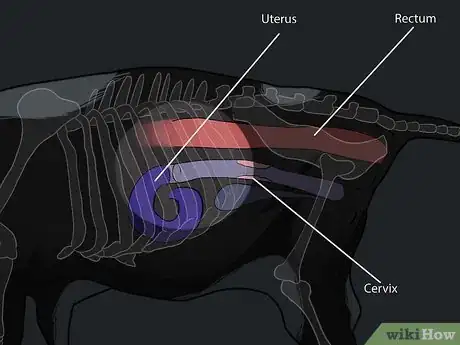
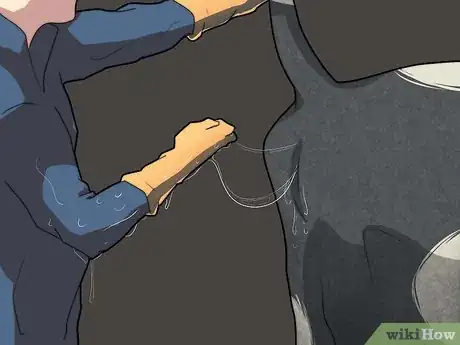
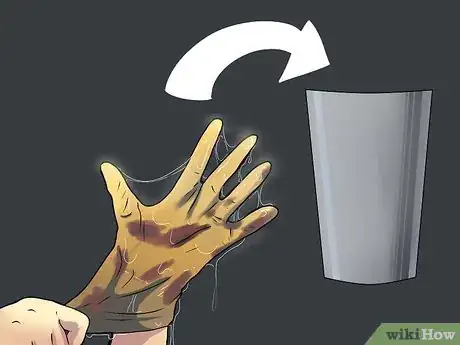
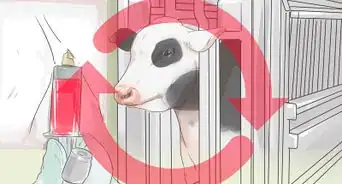
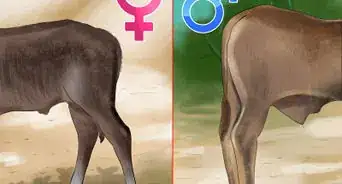
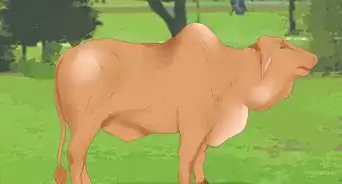

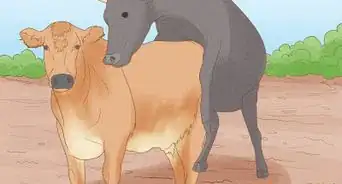
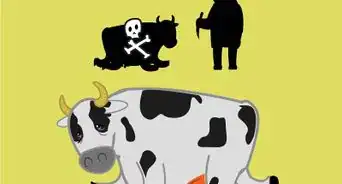
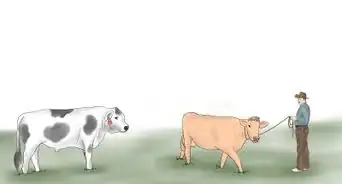

-in-Cattle-Step-6.webp)












